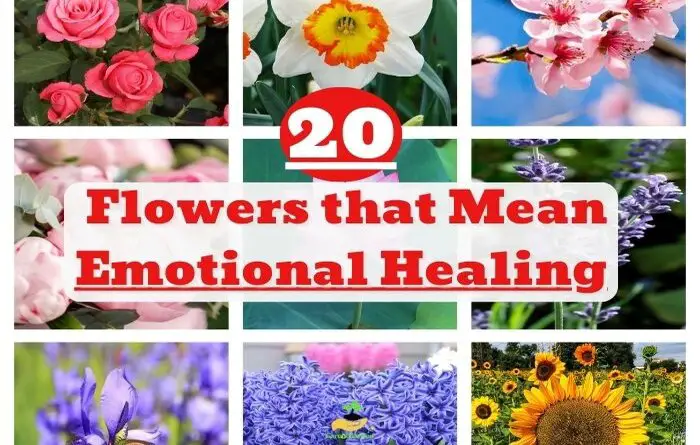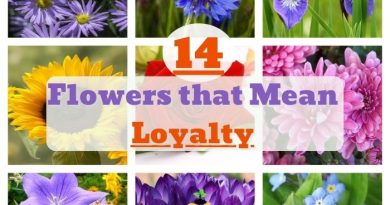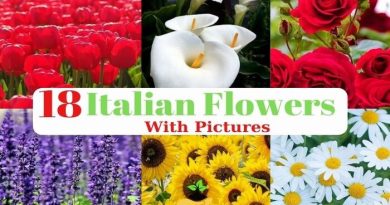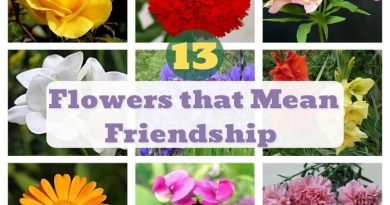Top 20 Flowers That Mean Emotional Healing: Surprising Benefits
Flowers are a beautiful way to express yourself and show your emotions. When someone is going through a difficult time, flowers can be especially helpful because they can help with emotional healing and make people feel better.
If someone has been through trauma or grief recently but hasn’t necessarily talked about it yet, sending them some fresh or dried flowers could help them open up about their feelings and start healing from the experience they had.
Flowers have been a time-honored way of expressing emotion and conveying messages for centuries.
Each flower has its special symbolism. In this article, we will explore the top 20 flowers that are commonly associated with emotional healing and their meanings.
So, next time you are looking to show someone that they are in your thoughts, consider these blooms to bring some solace and understanding.
| Flower Name Representing Emotional Healing | Meaning | Bloom Season |
|---|---|---|
| Lavender | Calming, soothing, promotes relaxation | Summer |
| Chamomile | Calming, soothes nerves, promotes relaxation | Spring, Summer |
| Rose | Love, compassion, comfort, emotional support | Spring, Summer, Fall |
| Peony | Healing, hope, new beginnings, renewal | Late Spring, Early Summer |
| Lotus | Purity, enlightenment, spiritual healing | Summer |
| Marigold | Comfort, joy, upliftment | Summer, Fall |
| Iris | Wisdom, hope, courage, faith | Spring, Summer |
| Daffodil | Rebirth, new beginnings, positivity | Spring |
| Sunflower | Happiness, optimism, joy, positivity | Summer, Fall |
| Dahlia | Inner strength, creativity, dignity | Summer, Fall |
| Lily of the Valley | Sweetness, purity, renewal, innocence | Spring |
| Carnation | Love, admiration, comfort, gratitude | Spring, Summer |
| Hyacinth | Regeneration, rebirth, inspiration | Spring |
| Chrysanthemum | Happiness, joy, longevity, well-being | Fall |
| Honeysuckle | Sweetness, healing, love, devotion | Spring, Summer |
| Sweet Pea | Delicate pleasures, blissful pleasure, joy, gratitude | Spring |
| Forget-Me-Not | Remembrance, love, friendship, loyalty | Spring, Summer |
| Bluebell | Gratitude, humility, humility, everlasting love | Spring |
| Azalea | Balance, harmony, healing, renewal | Spring |
| Amaryllis | Determination, courage, beauty, strength | Winter |
1.Rose
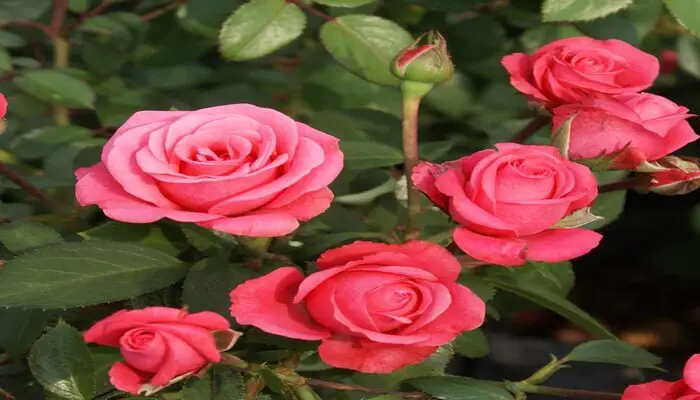
Roses are known to captivate the eye and bring beauty and scent to a garden. With a wide range of colors – including red, pink, white, yellow, and orange – and their ability to come as single, semi-double, or double flowers, roses are the perfect way to add depth and elegance to any garden.
Rose is a symbol of emotional healing and love. The different shades of rose represent different things, such as red representing passion, white purity and chastity, yellow friendship and pink grace gratitude appreciation.
Rose flower essence, in particular, is believed to promote self-love and compassion, and can be taken orally or applied topically.
Rose has flavonoids which exhibit antidepressant properties and can reduce the amyloid β, which is the pathological cause of Alzheimer disease.
Whether seeking anxiety relief or a little extra self-love, rose flower essence can be an effective and natural way to bring balance and harmony into your life.
2.Peony
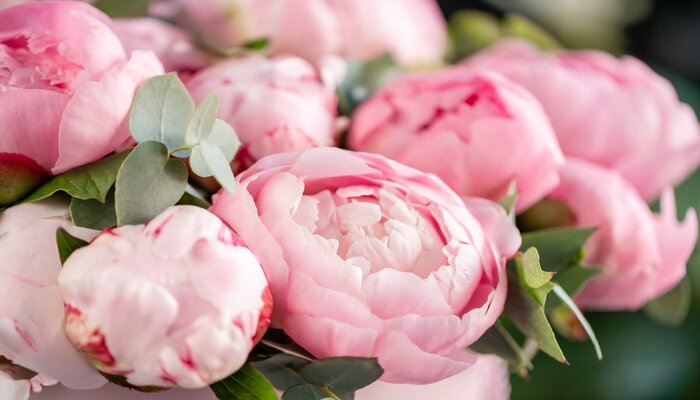
Adored by gardeners and florists alike, Peonies are a spectacular addition to any garden or floral arrangement.
Not only do the large, showy, fragrant flowers come in a range of stunning colors, including white, pink, red, and yellow, but they also possess powerful healing properties.
In traditional Chinese medicine, Peonies were used as a remedy for emotional distress. Their color can also play an important role in their emotional healing properties, particularly pink peonies.
They are believed to represent a new beginning and the ability to overcome difficult challenges. The peony’s large, lush petals and vibrant colors inspire feelings of happiness and joy, making them a popular flower for emotional healing.
3.Lotus
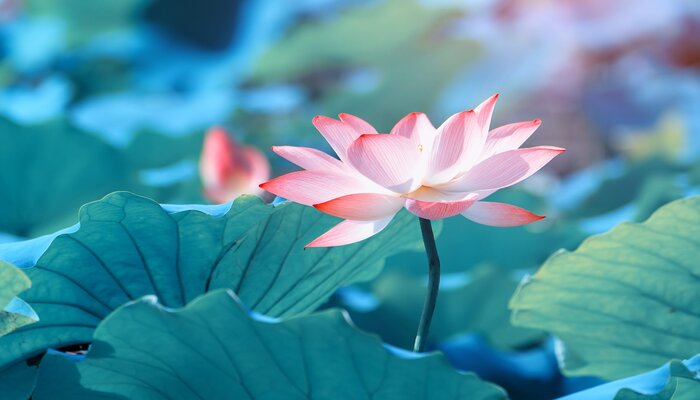
Have you ever beheld the majestic beauty of a lotus flower? Widely appreciated for its unique and distinctive appearance, this ornate flower is one of the most beautiful in the world.
Lotus flowers come in a variety of colors, including white, pink, red, yellow, and blue. They are seen as symbols of purity, enlightenment, and spiritual awakening, and it’s believed to be calming for both the mind and body when their essential oil is used.
The lotus flower is a powerful symbol of emotional healing in many cultures. The lotus is a sacred flower in Hinduism, Buddhism, and other religions, and it is often used as a symbol of spiritual enlightenment and purity.
Lotus flower has been revered for its spiritual and emotional healing properties for centuries. Despite growing in muddy water, it remains pure and untouched, symbolizing resilience and enlightenment.
It grows from the mud and rises above the water to bloom, representing the ability to overcome obstacles and emerge from difficult times stronger and more beautiful.
Lotus is a symbol of purity and rebirth. It represents strength, courage and beauty. Lotus also symbolizes peace, tranquility, enlightenment and purity.
Simply being in the presence of lotus flowers can help to create a sense of calm and inner peace.
The lotus also has significant healing properties. The flower is believed to be a natural remedy for a range of physical and emotional ailments, including anxiety, depression, and insomnia.
4.Sunflower

Sunflowers have an undeniable charm that is both timeless and uplifting. Not only are they known for their bright and cheerful appearance, but they are also a symbol of happiness, optimism, and warmth.
Sunflowers are more than just beautiful flowers – they are associated with positivity, happiness, and a sunny disposition.
Being in the presence of sunflowers can help to lift spirits and promote a more positive outlook.
If you are having difficulties with someone close to you such as a friend or family member, consider giving them a bouquet of sunflowers as a way of showing how much they mean to you. You might also want to include some other healing flowers such as daisies or sayings written on cards that express how much they mean to you too!
5.Forget-Me-Not
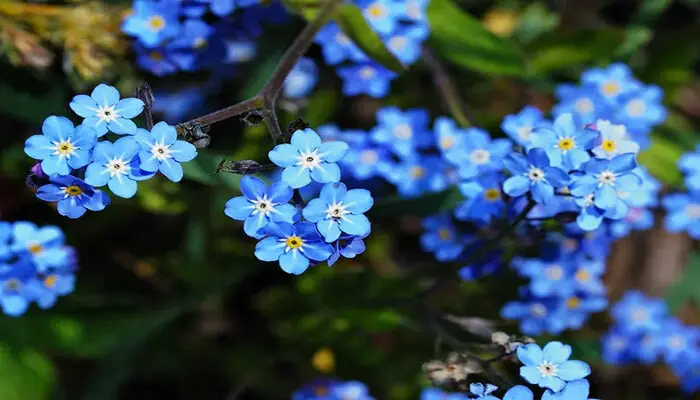
Forget-me-nots are small, delicate, and colorful flowers renowned for their beauty and symbolism. These graceful blooms are typically only a few inches in height, yet they make a big impact with their stunning blue color, as well as pink, white, and other pastel shades.
Forget-me-nots are the perfect reminder of remembrance and emotional healing. These flowers are the perfect fit for bringing emotional balance, serenity, and a strong connection to loved ones and the past.
6.Lavender
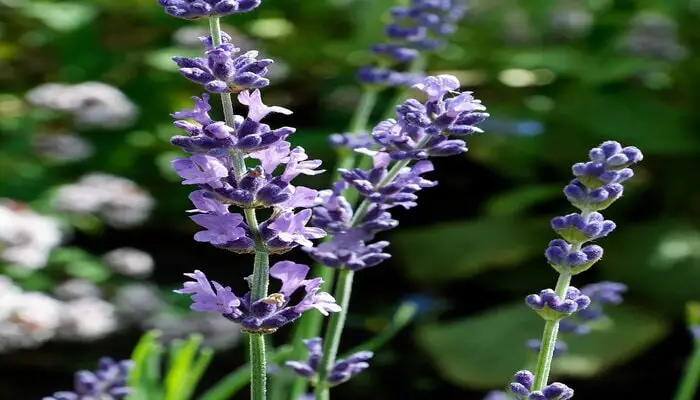
Lavender is a beautiful and distinctive plant renowned for its delightful fragrance, gorgeous color, and unique shape.
It is a popular choice for gardens, floral arrangements, and other decorative purposes due to its versatility and wide applicability.
With its distinctive spiky flower petals clustered at the top of the stem, lavender is a captivating sight. lavender carries a special significance as it is widely used for emotional healing.
Through essential oil, flower essence therapy, and gardening therapy, lavender can be employed to promote feelings of relaxation, balance, and emotional well-being.
Lavender flower has been known to help with emotional healing due to its calming properties. Additionally, lavender oil can help release energy blockades and promote tranquility and peace.
Massaging with lavender oil can also help cleanse and release stuck emotions. Finally, receiving a lavender flower as a gift in a dream is a sign of emotional healing.
7.Marigold
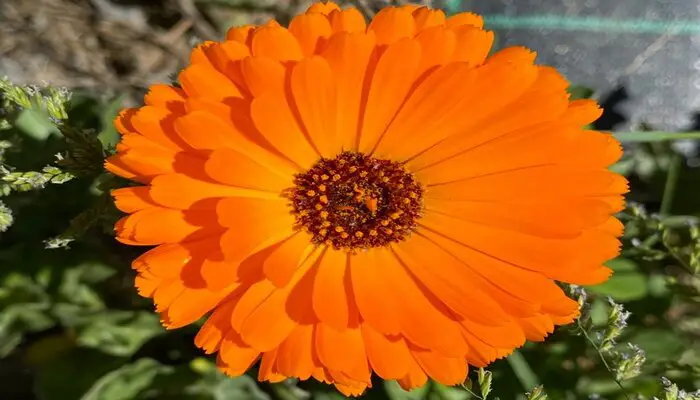
Marigolds are versatile and beautiful flowers, ranging in size from small, compact plants to larger ones that can reach several feet tall.
Their petals are arranged in a circular pattern, typically broad and slightly curved with a unique texture that is somewhat fuzzy or velvety.
But there is more to marigolds than just beauty. They are associated with spirituality and believed to have protective and healing powers.
They are even used in rituals and ceremonies to bring good luck and positivity and ward off negative energy. For educated readers, marigolds are an exciting and powerful addition to any garden.
8.Iris
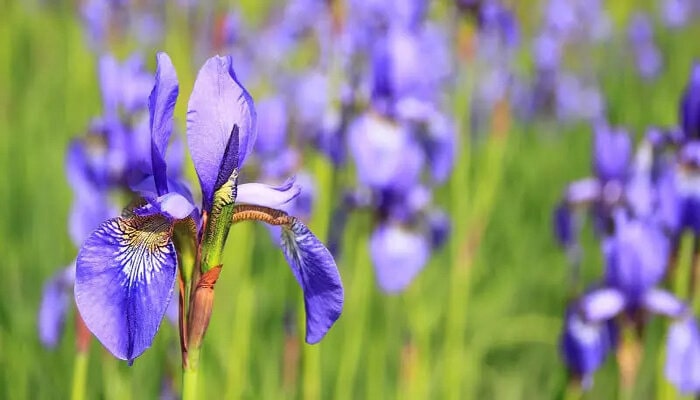
Iris is a beautiful and unique genus of flowering plants that are renowned for their striking appearance and wide range of colors.
The iris flower has a long history of being used to symbolize emotional healing and strength. It’s also known as “messengers of hope,” because its beautiful colors represent courage and perseverance through difficult times.
Irises have a unique shape, with the downward-facing falls and upright standards. Every color of the iris carries its own spiritual and emotional meaning.
For example, purple irises are associated with spiritual awareness and intuition, while yellow irises are symbolic of joy and happiness.
9.Cherry Blossom
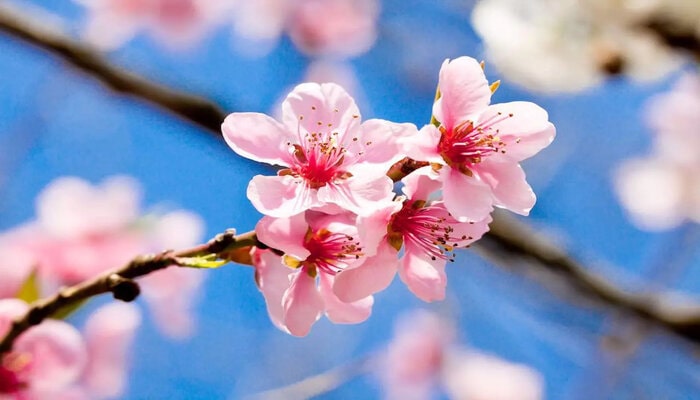
Cherry blossoms are beautiful and delicate trees, widely admired for their stunning flowers and graceful appearance.
Not only are they a popular choice for gardens, parks, and other outdoor spaces, but they also symbolize renewal, beauty, and transience.
The calming effect of these delicate blossoms can be a powerful tool for promoting emotional well-being, whether it be through observing them in person, enjoying photos, or incorporating them into art or décor.
10.Chrysanthemum
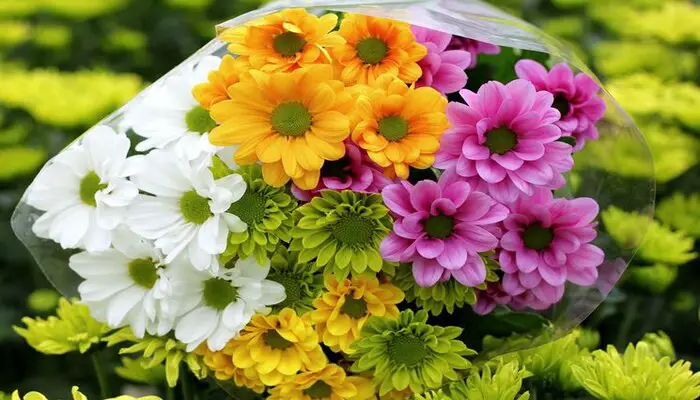
Beautiful and long-lasting, chrysanthemums are a popular choice for any garden, blooming from late summer to early winter depending on the variety.
With a variety of sizes, from small flowers less than an inch in diameter to large varieties several inches across, these flowers are a stunning addition to any landscape.
Not only are they aesthetically pleasing, but they also have potential emotional healing properties that have been used in traditional medicine and alternative therapies.
As a mindfulness practice, observing chrysanthemums and taking in their beauty can be an excellent way to promote presence and focus at the moment.
11.Hyacinth
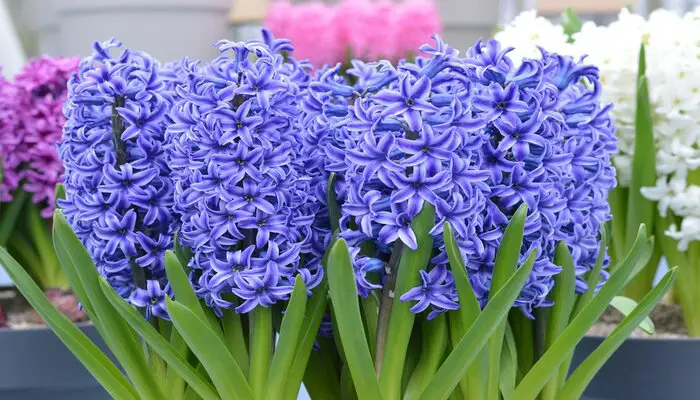
Hyacinths are a beautiful symbol of rebirth and renewal, with their fragrant, densely packed flowers and vibrant colors.
Growing to a height of 8 to 12 inches (20 to 30 cm), they feature narrow, strap-like leaves that emerge from the base of the plant. Their presence can help to inspire new beginnings and fresh starts, promoting emotional healing from past traumas.
This beautiful plant originated from the Middle East but today can be found growing all over the world. Hyacinths have a wonderful fragrance that will fill your home with freshness when you bring one inside!
As a sign of new beginnings, hyacinths can be a powerful reminder of the potential for growth and transformation. They’re also associated with spring, youth and rebirth; purity and innocence.
12.Daffodil
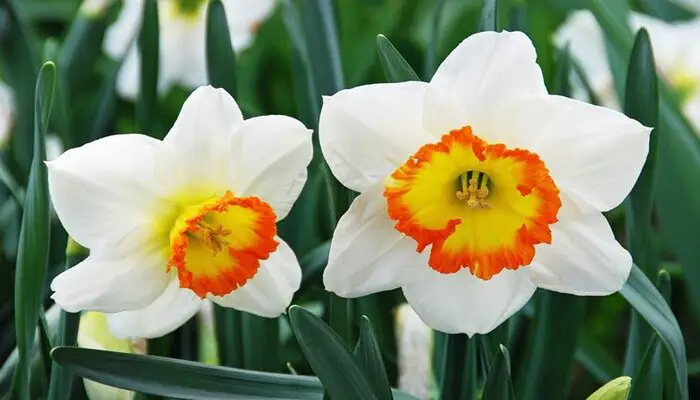
Daffodils are a beloved spring blossom, renowned for their vibrant yellow hue and trumpet-shaped blooms.
Not only are they visually stunning, but the cheerful yellow hues of daffodils can be a powerful uplifting force for those suffering from depression or seasonal affective disorder (SAD).
Each bloom contains a central trumpet-shaped corona, surrounded by six petals of usually bright yellow or white.
The corona may also be a different hue and can often be a brighter yellow or orange. Brighten up your days with the vibrant beauty of daffodils and enjoy their mood-boosting power.
When you give someone daffodils you are telling them that you want them to feel happy again; this can be especially helpful if they have recently experienced loss or grief in their life (e.g., death).
If your friend lost his/her job recently then giving him/her some daffodils would help lift their spirits up by reminding him/her that everything will be alright eventually!
13.Carnation
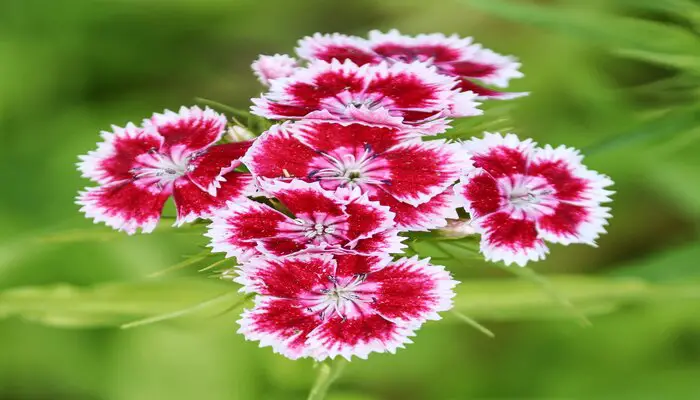
Carnations are beloved for their delicate, ruffled petals and sweet fragrance.
These elegant blooms boast lush fullness and multiple layers of petals, which come in various shapes from tightly packed to slightly open.
Carnations are often used to express love and gratitude, making them a perfect choice for floral arrangements to show appreciation and build relationships.
Symbolizing positive emotions, these beautiful blooms create a lasting impression.
14.Dahlia
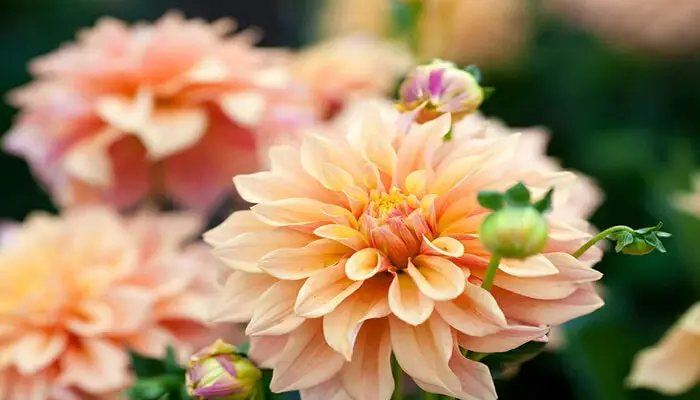
Dahlias are more than just beautiful, intricate flowers – they offer a unique combination of shapes, sizes, and colors that make them perfect for adding a touch of elegance to any floral arrangement or garden.
Their large and showy blooms feature multiple layers of petals, each with either a flat or slightly curled texture, creating a stunning and varied display.
But beyond their beauty, dahlias can also be beneficial for mental health.
Spending time around dahlias can help to foster a deeper connection to nature, which can help to reduce stress and anxiety, particularly for those living in urban areas where access to green spaces can be limited.
15.Lily of the Valley
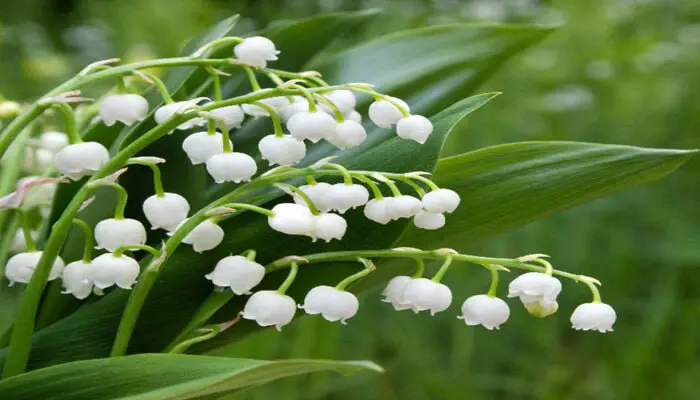
Lily of the valley is a small, bell-shaped flower that blooms in the spring. It’s a symbol of innocence and purity, as well as devotion and faithfulness; it also represents love, affection and hope for your loved one to heal.
The delicate and graceful lily of the valley adds a touch of elegance and charm to any garden or floral arrangement with its small, bell-shaped flowers and glossy green leaves.
Not only does it bring beauty to your space, but it has long been used as a symbol of comfort and peace for people who are grieving.
Its pleasant fragrance is thought to promote feelings of forgiveness and help to release negative emotions such as anger and resentment.
If you want to send an important message about how much you care about someone but don’t know what words will do justice to your feelings–or if there are no words at all–a bouquet of lily of the valley could be just what they need right now.
16.Zinnia
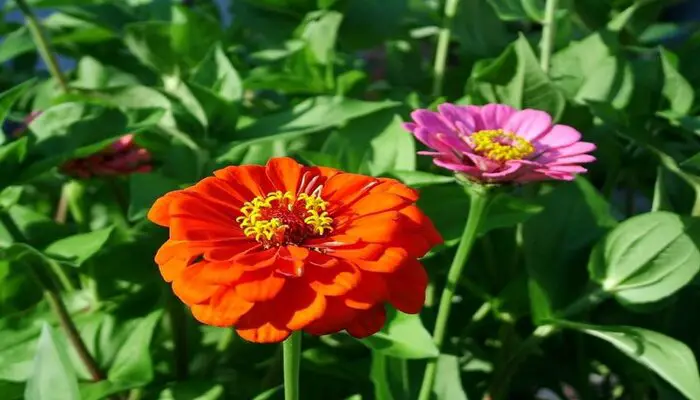
Zinnias are vibrant and eye-catching annual flowering plants in a wide range of beautiful colors, from pink and red to orange, yellow, white, and purple.
These large, daisy-like blossoms boast a central disk surrounded by ray petals, making them an ideal choice to create a cheerful atmosphere.
Not only do they add a bold splash of color to any landscape, but studies have also shown that the bright hues of zinnias can have a positive effect on mood, lifting spirits and promoting feelings of happiness and joy.
17.Aloe Vera
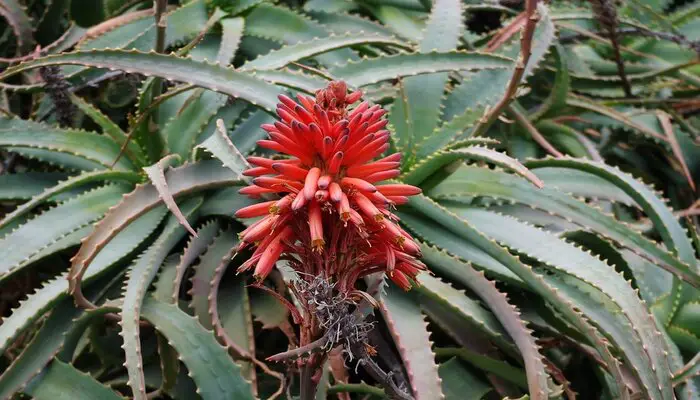
Aloe vera is a succulent plant with thick, spiky leaves and healing properties. Its gel-like sap is found inside the leaves and is clear and slippery.
Incorporating aloe vera into your self-care routine can help promote a sense of self-care and self-love.
Whether you want to use it for beauty or health, adding aloe vera to your self-care routine can help you feel more connected to yourself and your body.
A study published in the Journal of Ethnopharmacology found that aloe vera extract had an anxiolytic effect (reduce stress, anxiety) in mice, which suggests that it may have similar calming effect on the mind and body in humans.
18.Calendula
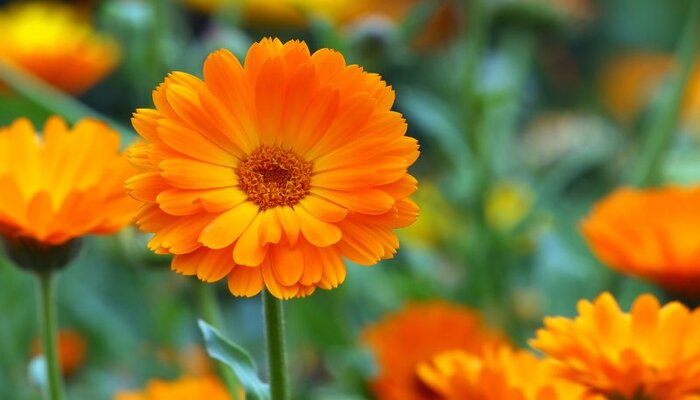
Calendula, also known as pot marigold, is an annual flowering plant renowned for its cheerful and vibrant hues.
Cultures around the world have long believed that calendula’s bright and cheerful blooms can help to improve mood and bring joy and joyousness into the home.
Calendula flower has been used for medicinal, cosmetic, spiritual, and emotional healing purposes since Ancient Egyptian times. It is believed to have therapeutic powers that can heal the soul of every trauma.
19.Jasmine
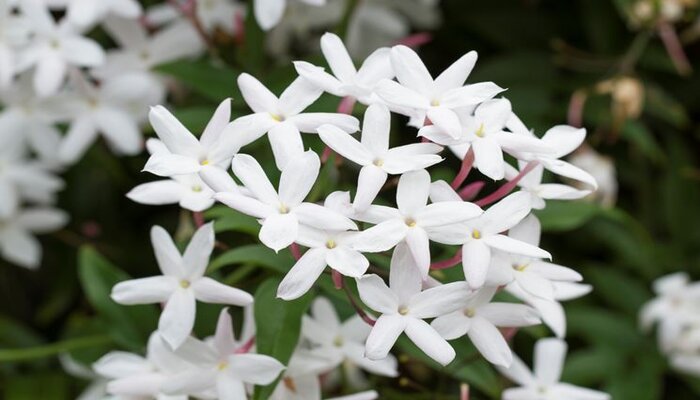
Jasmine flowers are a type of small, white, and fragrant flower that grows on a vine. Their five or six petals are usually rounded or pointed, and they grow in clusters.
Not only are they beautiful to look at, but they also possess a calming, uplifting scent that is known to have a profound effect on emotional well-being.
Jasmine flower has been utilized for centuries as a representation of healing, and its lovely and floral scent has been acknowledged to have a soothing impact, easing anxiety and stress, and supporting relaxation.
This makes jasmine flower a widely recognized choice for aromatherapy, promoting better mood and emotional wellbeing.
Studies have discovered advancements in mood and sleep with the use of jasmine oil either through an aromatherapy session or applied topically on the skin, and it can also serve as a natural energy booster.
The essence of jasmine flower aids in identifying and releasing deeply embedded emotional barriers that may stem from past traumas, old attachments, or unproductive emotional patterns.
20.Gerbera Daisy
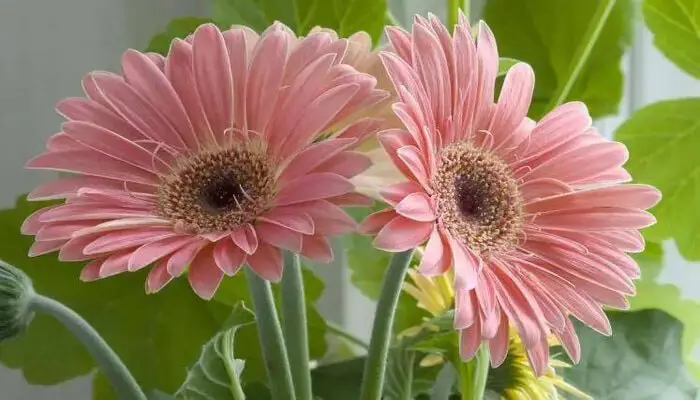
Gerbera daisies are a type of flowering plant that is renowned for its large, vibrant blooms.
These flowers have a unique and recognizable appearance and are popular for their cheerful and vibrant colors.
They are often used in flower therapy and other forms of alternative healing to promote emotional well-being, due to their uplifting and joyful look.
Gerberas are good for people who are feeling down or have low self esteem. They will help bring back their smile, making them feel better about themselves again!
Conclusion
In conclusion, incorporating flowers into your life can be powerful tool for emotional healing The properties utilized and have been shown to reduce stress, anxiety, and depression.
As you just saw many types of flowers have different meanings and effects on emotions, so it’s important to choose the ones that resonate with you personally.
Hopefully, you’ve found some inspiration in this list of emotional healing flowers.
Frequently Asked Questions
Flowers contribute to emotional healing by providing comfort, reducing stress, and promoting positive emotions. The scent of flowers can help calm the mind and reduce anxiety and depression. Additionally, the act of caring for and nurturing plants can provide a sense of purpose and accomplishment, which can boost mood and self-esteem.
Yes, there are certain colors and types of flowers that are best for emotional healing. For example, roses are known to have strong anti-inflammatory properties that can be helpful for treating both external and internal ailments. Chamomile is also known to reduce stress and anxiety and is associated with positivity, optimism, and joy. Jasmine is known to have the power to cure body aches and cramps and can also help with digestion issues. Additionally, other medicinal flowers such as lavender, chrysanthemums, and sunflowers have been known to have healing properties.
Yes, there is scientific evidence that shows flowers can aid in emotional healing. Studies have found that exposure to flowers and plants can reduce anxiety, depression, and stress levels. The scent of flowers has also been found to have a calming effect on the nervous system, which can help reduce feelings of tension and promote relaxation. Additionally, the act of caring for plants has been shown to have a positive impact on mental health, reducing symptoms of depression and anxiety.

